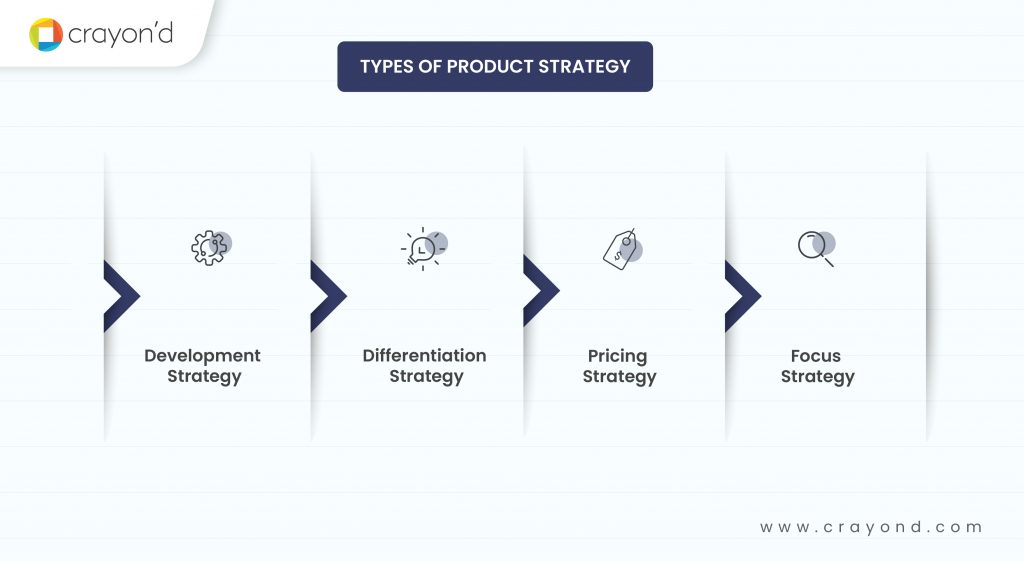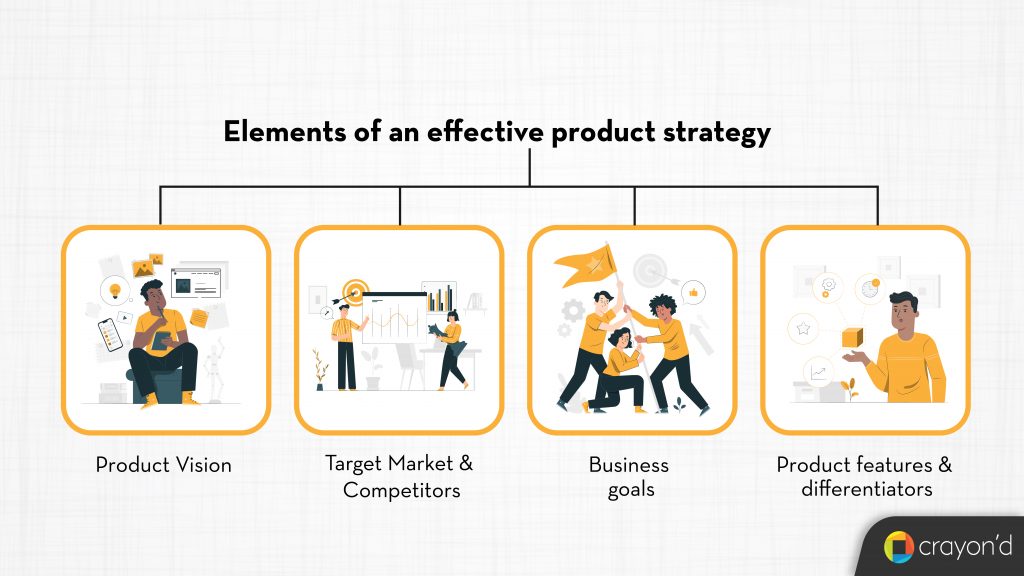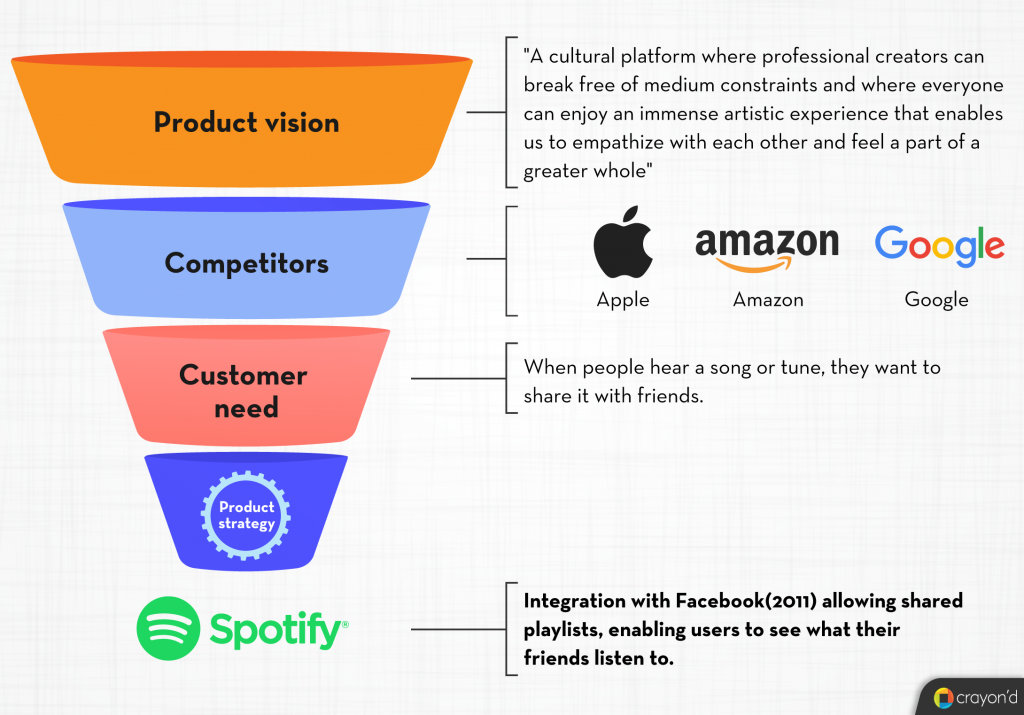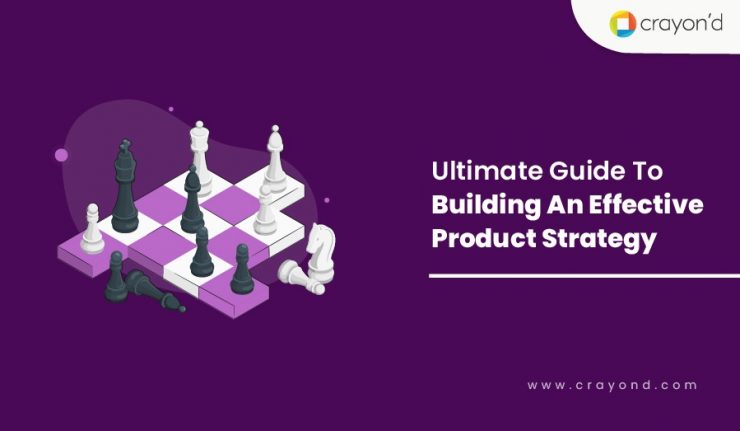All we hear is the increasing rate of new products being built and introduced in the market. But do all of them succeed?
According to a survey by Harvard, 80% of new products fail every year. There are many reasons like no market need, lack of customer understanding, and so on, causing them to fail.
If you dig deep into every reason, all of them will bring you to one particular point— ignoring product strategy.
To develop a product, introduce it in the market, and ensure its continued success, product strategy plays a key role.
Here, we will see how to create an effective SaaS product strategy for your product success.
Let’s begin.
What is the SaaS Product Strategy?
Product strategy is the plan that defines how your product should be developed to achieve the business goals. Not all plans can be called a strategy. For a plan to qualify as a strategy, it should be able to deal with the contingencies that pop up during the journey.
The product vision statement sets the goals based on which the SaaS product strategy is devised. The product roadmap is derived from the strategy. So the hierarchy is like this
Product vision— > Product strategy— > Product roadmap
While the roadmap and strategy are both plans in general, they have a very big difference. The plan in the roadmap will be for building a feature, while a plan in the product strategy will be for attaining the company goals.
A good SaaS product strategy should translate goals from the vision that can be executed using the roadmap.
To know the scope of the product strategy, let’s look into what questions it answers.
- Who your customers are?
- How will your product solve their problems?
- What makes your product stand out among the competitors?
- What are the goals the product needs to achieve in its entire lifecycle?
Why is Product Strategy Crucial in SaaS?
Now that we know what a product strategy is, we should jump on to the question “Why do you need one?”
Let’s explore some of the reasons here.
- 1. Make better decisions
- As you start developing a product, unprecedented challenges arise along the way. During such times, you might need to alter the plans accordingly. Uncertain times bring chaos and that’s when your product strategy comes into play.
- Referring back to the strategy document will help you clear the doubts, re-examine the goals, and regain the clarity to make better product decisions.
- 2. To avoid distraction from unwanted things
- Product strategy defines business objectives and actions to fulfill them. So when you create a product roadmap, you will have a clear picture of what needs to be done. Moreover, it will help you distinguish between necessary and unnecessary actions.
- This saves the time that might be wasted on unwanted tasks. Product strategy will keep all the functions adhered to the goals.
- 3. Aligning workflows
- As a product is being developed multiple teams are contributing to this whole process. Every team has an individual set of tasks and goals.
- These are the derivatives of the business objectives. In addition to knowing the individual goals, all the team members should be aligned with the big picture. This way, a smooth and proper process is ensured.
To help you in bringing the teams together towards a common vision, product strategy will be of great help.
Types of Product Strategies

Development Strategy
Product development is a process that spans from ideation to marketing. This process poses a variety of risks. To reduce and tackle them, development strategies are used. Development strategies can be used for
- Developing a new product for existing markets
- Improving an existing product
- Developing a new product for a new market
Differentiation Strategy
Product differentiation is making your product unique in the eyes of your customers. The differentiation strategy defines the approach you will be taking to make your product distinct and notable. Your product differentiation strategy can focus on either the functional aspects (developing them) or the way is it marketed. Sometimes, they both go hand in hand.
Differentiation Strategy comes into the picture when you decide on the features of your product and develop your value proposition. You can also adhere to it when you are planning for product positioning in the market.
A good product differentiation strategy focuses on the target market and should put forth what the customers think. The customers should be able to resonate with it. It must enable you to create a competitive advantage in the market. Your strategy should be able to match what you put forward to distinguish yourself and how your customers will perceive it.
Pricing Strategy
How much you charge for your product has a big say in your product adoption and success.
Price is influenced by some factors like business goals, target market, demands & trends, competitor pricing, etc.
Without a strategy in place, it gets difficult to determine the right prices for your product. Product pricing strategy helps you in deciding a price where you can attract customers without compromising on your profit margin. There are several predefined pricing strategies like penetration pricing, skimming pricing, etc, that you can choose from.
Focus Strategy
A method for identifying potential niches followed by understanding the needs and users to come up with a product suited for them. This strategy usually advocates market segmentation based on geographical location, type of customers, or product line. Businesses that wish to become product leaders without too many competitors, can try venturing or expanding into a niche.
One popular real-life example of the ‘focus strategy’ was the Coke introducing ‘Diet Coke’ for diabetes patients.
Elements of an Effective SaaS Product Strategy
The taste of food depends on two things— the ingredients and the cooking process. Similarly, for the product strategy to be good, it’s important that you add the right ingredients and cook it up (build) properly. We’ll discuss the ingredients, i.e. the elements that make up a strategy.

Product Vision
The product vision defines the future of the state of the product. To be more clear, it conveys what the company wishes to accomplish with the product in the future.
Target Market and Competitors
Market analysis will help you identify the different user personas, their purchase behaviors, lifestyle choices, and needs. This will help you tailor your product for different customers.
Another part of market research is competitor analysis. A detailed study on who your competitors are, how their product is sought in the market, and gaps in their offerings. Studying the competition will also provide great insights into product positioning and market trends.
Business goals
A product is created to solve the problem of your target users. But there is another purpose the product needs to fulfill— the business goals. A product must not only benefit the users but also the business. The business benefits can be revenue, brand establishment, etc.
Product features and differentiators
It’s the features of your product that determine the success of your business. From marketing and acquisition to retention, all your efforts to grow your business, rely on the product and the value it provides.
So it all comes down to the features your product contains and how they stand out in the market, amongst the competition. Determining the features that will effectively solve the user problems is crucial.
Product strategy example
Spotify
Product vision: “A cultural platform where professional creators can break free of medium constraints and where everyone can enjoy an immense artistic experience that enables us to empathize with each other and feel a part of a greater whole”
Competitors: Apple, Amazon, Google
Customer need: When people hear a song or tune, they want to share it with friends.
Spotify’s move/strategy: Integration with Facebook(2011) allowing shared playlists, enabling users to see what their friends listen to.
This strategy reduced the friction in the signup process, while also adding competitive advantage and resonance with users. As a result, Spotify gained 1 Million new users, in just 4 days.

Endnote
The SaaS product strategy dictates the work of your entire product team.
Every step in product development requires analytical thinking, frequent changes, and improvements. Spending your time checking if it can be implemented (aligning with business goals, customer needs, etc) every time is a tedious task. Product strategy makes this process easy.
All major product decisions are made referring to the product strategy.
With huge power comes huge responsibility. Developing your product strategy needs care and utmost attention. Any loophole in product strategy will cost you a lot.
If you are unsure about doing it yourself, seek help from one of the many digital product agencies present.







Add comment